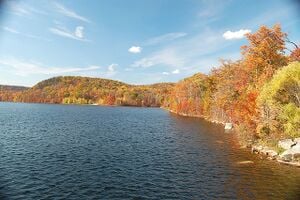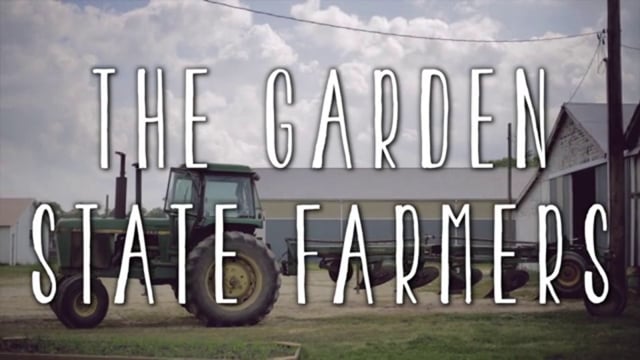
- New Jersey Audubon Celebrates Passage of Delaware River Basin Conservation Act, Dec 12, 2016...[1]
Food activism[edit | edit source]
Community energy[edit | edit source]
Solar power[edit | edit source]
New Jersey has over 4,700 MW of installed solar power capacity as of January 2024, which provides more than 7% of the state's electricity consumption. The's state's growth of solar power is aided by a renewable portfolio standard that requires that 22.5% of New Jersey's electricity come from renewable resources by 2021 and 50% by 2030, by incentives provided for generation of solar power, and by one of the most favorable net metering standards in the country, allowing customers of any size array to use net metering, although generation may not exceed annual demand. As of 2018, New Jersey has the sixth-largest installed solar capacity of all U.S. states and the largest installed solar capacity of the Northeastern States.
Wind power[edit | edit source]
Wind power in New Jersey is in the early stages of development. There are various projects underway to create windfarms along coastal areas in the state on land, on piers, and on the continental shelf of the Atlantic Ocean off the southern Jersey Shore. In July 2021, the New Jersey Board of Public Utilities (BPU) approved two projects which would bring the state's committed windpower capacity to over 3,000 MW. W
Environment quality[edit | edit source]
Citizens United to Protect the Maurice River and Its Tributaries, Inc., or "CU", is a 501(c)(3) (nonprofit) regional watershed organization. It was founded in 1979 and incorporated in 1986.
CU received Environmental Quality Awards from the United States Environmental Protection Agency (EPA) in 1994 and again in 2000 for their efforts to procure the federal Wild and Scenic designation for the Maurice, Menantico, Manumuskin Rivers and the Muskee Creek. In the year 2000 CU was also acknowledged by the EPA for the work on an osprey colony, their annual raptor and waterfowl survey, the film “Down Jersey” and accompanying teachers’ guide, and the North American Wetlands Conservation Act.
In 2002 Citizens United to Protect the Maurice River and Its Tributaries, Inc. took first place in the category of Education and Learning Institute, NJ Department of Environmental Protection, Division of Watershed Management for their PBS film “Down Jersey” and the teachers’ curriculum, “Down Jersey: Celebrating Our Sense of Place.” Over 500 teachers have taken workshops in order to teach the curriculum.
CU also co-produced a documentary with New Jersey Network for which they received a Mid-Atlantic Emmy award for Outstanding Arts Program or Special.
Citizens United to Protect the Maurice River and Its Tributaries, Inc., link checked 16:15, 15 December 2021 (UTC)
Resources[edit | edit source]
Citizens data initiative[edit | edit source]
Energy Data & Statistics for New Jersey
Research[edit | edit source]
- Plan Smart NJ, independent, non-profit planning and research organization
News and comment[edit | edit source]
2008
Transit Villages: A great way to reduce greenhouse gases? February 28[2]
About New Jersey[edit | edit source]
New Jersey is a state situated within both the Mid-Atlantic and Northeastern regions of the United States. It is the most densely populated of all 50 U.S. states, and is situated at the center of the Northeast megalopolis. New Jersey is bordered on its north and east by New York state; on its east, southeast, and south by the Atlantic Ocean; on its west by the Delaware River and Pennsylvania; and on its southwest by Delaware Bay and Delaware. At 7,354 square miles (19,050 km2), New Jersey is the fifth-smallest state in land area, but with close to 9.3 million residents as of the 2020 United States census, its highest decennial count ever, it ranks 11th in population. The state capital is Trenton, and the state's most populous city is Newark. New Jersey is the only U.S. state in which every county is deemed urban by the U.S. Census Bureau with 13 counties included in the New York metropolitan area, seven counties in the Philadelphia metropolitan area, and Warren County part of the heavily industrialized Lehigh Valley metropolitan area.
External links
References

